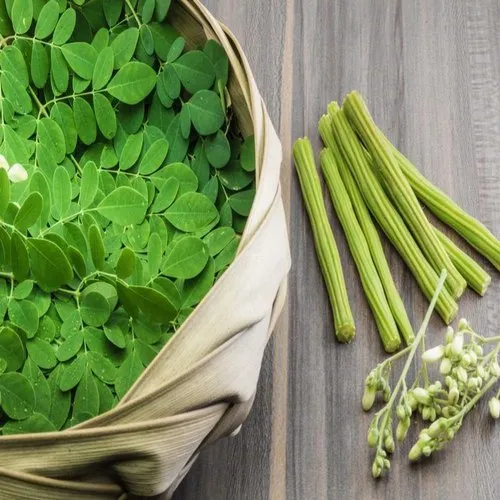Living with diabetes can be challenging, but natural solutions like moringa can make a real difference. In recent years, more people are turning to this powerful superfood to help manage blood sugar levels safely and affordably. If you’re looking for a natural way to support your diabetes care plan, this article will guide you through everything you need to know about using moringa for diabetes control.

Why Consider Moringa for Diabetes?
Moringa oleifera, also known as the drumstick tree or miracle tree, has earned a strong reputation as one of the best natural remedies for managing chronic conditions like diabetes. For people living with type 2 diabetes, consistently high blood sugar can lead to long-term health issues like nerve damage, kidney disease, and heart complications. That’s where moringa steps in as a supportive, plant-based aid.
Moringa is rich in bioactive compounds such as quercetin, chlorogenic acid, and isothiocyanates. These components have been studied for their ability to regulate blood sugar levels, support insulin production, and reduce inflammation throughout the body. What makes moringa particularly appealing is that it doesn’t just target one aspect of diabetes, but helps the body holistically by supporting various systems affected by high glucose levels.
In traditional medicine systems like Ayurveda, moringa has been used for centuries to manage blood sugar. While modern medicine continues to advance, many people are now turning back to natural remedies that are both effective and safe. I’ve personally witnessed clients who began using moringa report feeling more stable throughout the day, with fewer energy dips and mood swings caused by sugar crashes.
What makes it especially powerful is its affordability and accessibility. Moringa grows easily in tropical and subtropical climates, which means it’s available at a low cost in many parts of the world. You don’t need a prescription or a visit to a specialist—just a willingness to give it a try and stay consistent.
Another key benefit is that moringa supports weight management, which is closely tied to blood sugar control. The fiber content in moringa helps slow digestion and keeps you feeling full longer, preventing overeating and sudden blood sugar spikes. For people with insulin resistance, this can be a game-changer.
There’s also promising scientific data backing up its benefits. A 2012 study found that diabetic rats treated with moringa showed significantly lower blood glucose levels and improved antioxidant activity. These findings, while not conclusive for humans yet, offer a solid starting point and align with anecdotal evidence from countless people who’ve tried it.
From a practical perspective, moringa fits seamlessly into any diet. Whether you prefer smoothies, soups, teas, or supplements, there’s a version of moringa that can work for you. Some people even grow their own moringa trees at home to ensure they have a fresh supply.
If you’re tired of managing side effects from medications or just looking to add a powerful natural aid to your diabetes routine, moringa is worth considering. It’s not a replacement for medical care, but it’s a proven way to support your overall wellness journey with nature’s help.

The Science Behind Moringa and Blood Sugar
Scientific research on moringa and its impact on blood sugar levels has gained momentum over the past decade. As diabetes rates climb worldwide, researchers are turning to plant-based solutions for affordable, sustainable, and side-effect-free support. Moringa oleifera stands out due to its rich composition of bioactive compounds, vitamins, minerals, and antioxidants.
One of the most powerful components in moringa is chlorogenic acid, which helps regulate glucose levels by slowing the release of sugar into the bloodstream after meals. This means fewer blood sugar spikes, especially after consuming carbohydrates. Another important compound, quercetin, is a well-known antioxidant that supports the pancreas, which is responsible for insulin production. It also helps protect cells from oxidative stress, which plays a significant role in the complications associated with diabetes.
In 2014, a notable study published in ISRN Pharmacology tested the effects of moringa leaf powder on people with diabetes. The results were promising—participants who consumed moringa experienced an average of 13.5 percent reduction in fasting blood sugar levels. This was achieved without any major side effects, highlighting moringa’s potential as a gentle but effective herbal aid.
Another study conducted in India found that moringa supplementation improved hemoglobin A1c levels, a key marker used to assess long-term blood sugar control. In this study, participants consumed about 8 grams of moringa leaf powder daily over a span of three months. The researchers noted significant improvements not only in blood sugar but also in cholesterol levels.
What’s fascinating is that moringa doesn’t just target glucose levels alone. Its high fiber content helps regulate digestion and slows the absorption of sugar, which in turn helps to prevent post-meal spikes. Moringa also contains compounds that support liver function, aiding in the conversion and storage of glucose.
Some experimental studies on diabetic rats have shown that moringa extract improves insulin sensitivity and reduces inflammation in the pancreas. While animal studies cannot directly translate to human results, they provide a scientific foundation that justifies further exploration in human clinical trials.
My own experience with moringa started when I began researching herbal supplements for clients managing early-stage diabetes. One client, in particular, had a hard time keeping his glucose under control despite following his doctor’s dietary guidelines. After introducing a daily moringa tea and gradually increasing the intake to two cups a day, his post-meal sugar spikes began to decrease. Over time, he reported fewer cravings and more stable energy levels.
What sets moringa apart is that its health benefits extend beyond blood sugar. It’s rich in vitamin C, beta-carotene, magnesium, and potassium—all nutrients that support overall metabolic health. Since people with diabetes often struggle with nutrient deficiencies, moringa offers a natural and nutritional way to fill those gaps.
Many health experts now agree that integrating nutrient-dense herbs like moringa into a comprehensive diabetes care plan can significantly enhance results. While it’s not a replacement for prescribed medications, it can complement traditional treatments in a powerful way.
The bottom line is that moringa is not just another herbal trend. It’s backed by promising science and real-world experience. Whether used in powder, tea, or capsule form, it offers measurable support for blood sugar control, making it one of the best herbs for diabetes available today.
Real-Life Story #1: A Mother Managing Type 2 Diabetes
Sara, a 52-year-old mother of three living in a mid-sized town, was diagnosed with type 2 diabetes five years ago. At first, like many people, she followed the standard routine—taking prescribed medication, cutting out sugary foods, and checking her blood sugar levels twice a day. But over time, she noticed that despite her efforts, her energy levels were dropping, and her fasting blood sugar remained above normal. Her doctor increased her medication, but the side effects—nausea, fatigue, and brain fog—started interfering with her daily life.
Frustrated and exhausted, Sara began researching natural alternatives that could work alongside her medication. That’s when she came across a video on moringa and its benefits for blood sugar control. Skeptical at first, she decided to try it out cautiously. She bought an organic moringa powder from a local health store and began adding one teaspoon of it into her morning smoothies. The taste was earthy, but manageable, especially when blended with banana and spinach.
After the first two weeks, she didn’t notice any dramatic changes, but she felt a bit more stable and less jittery after meals. By the third week, she realized she wasn’t experiencing her usual mid-morning crashes. She also felt more alert, which helped her keep up with her responsibilities as a part-time school librarian and full-time mom. Encouraged by these changes, she continued using moringa daily and added a cup of moringa tea in the evening to wind down.

Two months later, her follow-up lab work showed something she hadn’t seen in over a year—her fasting blood sugar levels had dropped from 158 mg/dL to 127 mg/dL, and her HbA1c had improved as well. Her doctor was surprised and asked what she had changed. When she explained her routine, including the addition of moringa, he agreed to reduce her diabetes medication slightly, with a plan to monitor it over the next few months.
Sara says, “What amazed me the most was how such a small change made such a big difference. I didn’t overhaul my diet or start any intense workout plan. I just added moringa consistently.” She also shared that moringa helped with her digestion and bloating, which she used to struggle with.
By the sixth month, Sara was maintaining more stable readings. She also started sharing her journey on a small Facebook group for women managing chronic illnesses naturally. Her story inspired others to try moringa, and some even began growing the plant in their backyards.
Sara’s story reminds us that natural approaches can complement medical treatments effectively. They may not produce overnight miracles, but with consistency and mindfulness, they can lead to real, measurable results. She still keeps in touch with her doctor, continues taking her adjusted medication dose, and swears by her morning moringa smoothie.
Her final piece of advice to others dealing with type 2 diabetes? “Don’t expect magic, but do expect better days. Just start small, stay consistent, and listen to your body. Moringa gave me more control over my health than I ever thought possible.”
Real-Life Story #2: A Young Professional’s Preventive Approach
Ali, a 30-year-old software engineer living in Karachi, had always been mindful of his health, especially since both his parents were managing type 2 diabetes. While he wasn’t diabetic himself, he knew that his family history increased his risk significantly. Add to that a sedentary desk job, regular takeout meals, and stress from long hours in front of a screen, and Ali realized he needed to take preventive measures before it was too late.
It started with a routine check-up. His fasting glucose was slightly elevated, and his doctor warned him about prediabetes. That conversation was a wake-up call. He didn’t want to wait for the problem to get worse, so he began researching ways to take control of his health naturally. That’s when he discovered moringa while reading a blog post about herbs that help balance blood sugar.
Ali was skeptical at first. He had tried supplements before that made big promises but delivered little. Still, the science behind moringa seemed solid. He was particularly impressed with studies showing its ability to improve insulin sensitivity and its rich nutrient profile. He decided to start with two capsules of organic moringa extract daily, one in the morning and one at night.
At first, the change felt subtle. He didn’t feel any major shifts in his energy or mood. But after two weeks, he noticed he was sleeping better and didn’t feel as bloated after meals. Encouraged, he decided to go a step further. He swapped his afternoon energy drink for a warm cup of moringa tea, which helped him stay calm and focused through his coding sessions.
By the end of the first month, Ali had lost 4 pounds without making any dramatic dietary changes. He started craving lighter, whole foods, and naturally began cutting back on fried snacks and late-night takeout. He also started walking for 20 minutes every morning, combining his physical efforts with moringa’s natural support.
Three months into his routine, Ali scheduled a follow-up blood test. This time, his fasting blood glucose was well within normal range, and his doctor was pleasantly surprised. Even his cholesterol numbers had improved. Ali shared his new routine, and while the doctor didn’t discourage him from continuing, he advised him to keep monitoring his numbers and return for regular check-ups.
What Ali loved most about moringa was how low-effort it was. He didn’t have to change his entire lifestyle or follow a strict diet. He just had to remain consistent. “Taking moringa daily became as natural as brushing my teeth,” he said. “It gave me the motivation to care more about my health without feeling overwhelmed.”
By the sixth month, Ali had built an entirely new rhythm around his health. He meal-prepped on Sundays, continued with his walking habit, and even encouraged a few friends to join him in trying moringa. Now, he looks forward to his cup of moringa tea in the evenings, especially after dinner.
Ali’s story is proof that you don’t need a diagnosis to start caring for your blood sugar. Prevention matters, and tools like moringa make that process easier. He now manages his energy better, sleeps more soundly, and no longer fears the future of his health the way he once did.
His advice? “Start before it’s too late. You don’t have to be sick to get serious about your health. Moringa helped me stay one step ahead, and for that, I’m truly grateful.”
How to Use Moringa for Diabetes Management
Using moringa is simple, and there are several easy ways to add it to your routine:
1. Moringa Powder in Smoothies or Teas
Start with half to one teaspoon daily, and mix it into your smoothie, yogurt, or warm water. The taste is earthy, but you get used to it quickly.
2. Moringa Capsules
If you’re not a fan of the taste, capsules are a convenient option. Look for organic, high-quality supplements. A typical dosage is two capsules daily with meals.
3. Fresh Moringa Leaves
If you have access to the fresh plant, use the leaves in soups, stews, or salads. They are incredibly nutrient-dense and taste similar to spinach.
4. Moringa Tea
Boil a few dried leaves or use a tea bag. Drink once or twice a day, preferably after meals to help regulate blood sugar spikes.
Additional Tips for Best Results
- Monitor your blood sugar levels regularly while using moringa, especially if you’re on medication.
- Consult your healthcare provider before starting any new supplement, especially if you’re on insulin or oral medications.
- Pair moringa with other lifestyle habits like regular exercise, low-glycemic meals, and stress management.
What I’ve Personally Noticed
As someone who explores and tests natural remedies, I found moringa incredibly effective in reducing energy crashes after meals. My father, who’s been borderline diabetic, also uses moringa tea daily and now avoids the sugar spikes he used to get.
This isn’t a magic fix, but moringa has real potential when used consistently and as part of a bigger health plan.
Final Thoughts
Managing diabetes naturally doesn’t have to be expensive or complicated. Moringa is a time-tested, research-supported option that can support healthy blood sugar levels and overall wellness.
With so many affordable and easy ways to add it to your daily routine, there’s no reason not to give it a try. Just remember to track your progress, listen to your body, and keep your healthcare provider in the loop.
Your journey with diabetes is personal, but it doesn’t have to be overwhelming. Simple tools like moringa can help you take control naturally, one day at a time.



